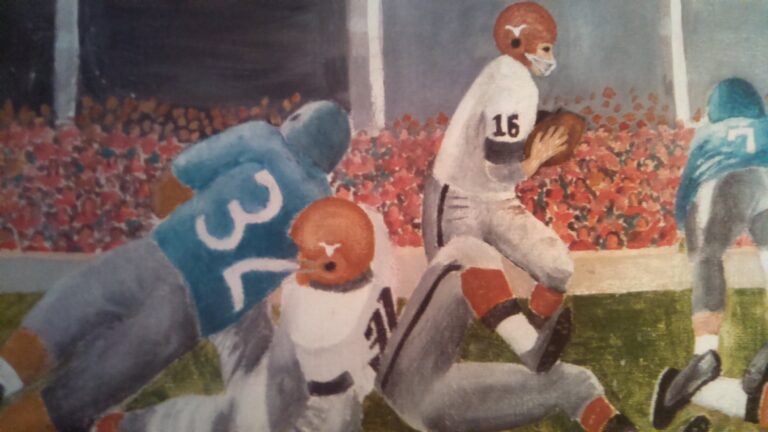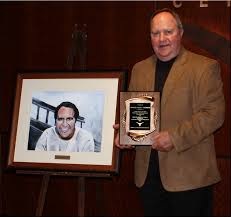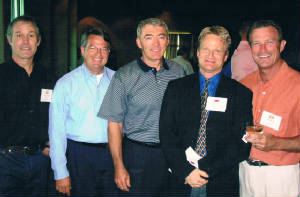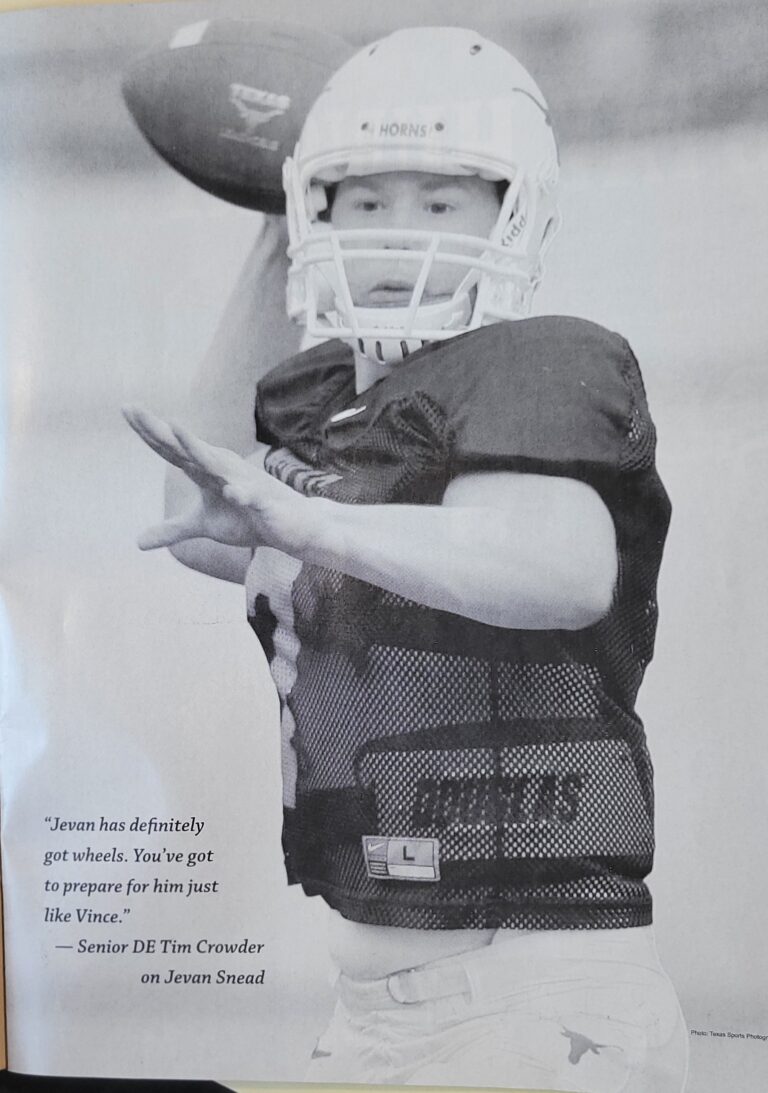Other CTE Stories
CTE
Top is good brain bottom is stage 4 CTE
Contributing to this report: Pro Football Writers Dave Campbell, Schuyler Dixon, Arnie Stapleton, Teresa M. Walker, and Sports Writers David Ginsburg, Bernie Wilson, Jim Vertuno, Steven Wine, and John Zenor.
The study included quarterbacks who are taught to stay in the pocket, where they absorb crushing hits and linemen who sustained repeated, sub-concussive blows to the head. It included kickoff specialists who sprint down the field in search of contact — a role known as “the suicide squad.”
“They were like a bunch of kamikazes,” said Virginia Grimsley, the widow of Oilers and Dolphins linebacker John Grimsley.
It included players, like Don Paul, whose family watched his body and his brain deteriorate until he was almost 90. And it included players like Dave Duerson, who would not let that happen, killing himself at 50 — with a bullet to the chest, so that his brain could still be studied.
The Associated Press asked the surviving relatives of more than a dozen players involved in the study to describe living and dying with CTE.
—The daughter who made sure her dad made it to Thanksgiving dinner.
—The children who had to remind their father that their mother had died so many times that they eventually stopped telling him, to avoid upsetting him anew.
—The wives forced to feed their husbands — many would become ex-husbands; so many families disintegrated under the strain of the disease — or push around in a wheelchair a once-imposing physical specimen.
Some said football wasn’t worth the damage. Others still love the sport.
Some quit the game themselves or forbade their children from playing.
Others just want it to be safer.
“It’s something parents should be discussing with their kids: ‘You’re not going to feel it now, but you’ll feel it later,'” said Scott Gilchrist, the son of Bills star Cookie Gilchrist. “‘Would you like to try golf?'”
These are the people who saw the disease up-close:
Raymond Turner
Add them all up, as Kevin Turner once did for his father, and he probably had more than 100 concussions. “That’s probably the sad part of it. He’d probably do it again,” Raymond Turner said in an interview at his home in suburban Montgomery, Alabama. “Knowing what he knew at the end, he would have been smarter,” the player’s father said. “But then, it was just ‘get back out there’ after two or three plays. He just had so many.” A fullback at Alabama before playing eight years in the NFL for New England and Philadelphia, Kevin Turner was 46 when he died in 2016. He had been diagnosed with amyotrophic lateral sclerosis (ALS or Lou Gehrig’s disease), but after studying his brain researchers declared that it was actually CTE. Days after the publication of the JAMA study, Raymond Turner showed a reporter the room in his lakeside home filled with memorabilia from his son’s career. The walls are covered by framed jerseys, newspaper clippings and photographs. Next to the front door hangs a drawing of his son in a football jersey, wearing his No. 34. “He was given this life because he was strong enough to live it,” the inscription read. “And he lived it well.”
Bobby Crespino
Joe Crespino was about 10 years old when he watched his father get tossed from a recreational softball game for arguing a call. Afterward, Bobby Crespino apologized to the umpire. “You could almost see him saying, ‘What the heck was I doing?'” Joe Crespino said. “When I was growing up, my mother would say my father had a temper. That was always explained as: ‘He’s Italian. Lots of men had tempers at that time.’ “Looking back, I wonder if that wasn’t related to CTE.” A star at Ole Miss and a first-round pick in the 1961 NFL draft, Crespino played eight years as a split end in Cleveland and New York. He also had a productive post-NFL career, bringing cable television to rural areas, serving as an alderman at-large in the Macon, Mississippi, city council, remaining active in his church. But in his late 50s, Bobby Crespino also began developing vague neurological symptoms. His left leg became “absolutely inflexible,” his son said. And the temper. “One of the things that was very frustrating for many years was that he had this broad array of physical ailments, and the doctors couldn’t diagnose them really well,” Joe said. “I am glad to have a sense of why that might have been happening. “I didn’t need a sense of peace from the study,” he said. “My father led a great life; he was a great man. But I’m very excited by the work that they’re doing. It’s bringing to light the connection between the sport and head injuries.”
Chris Nowinski
A former Harvard football player, Chris Nowinski parlayed an Ivy League pedigree and mop of blond hair into a career as a professional wrestling heel. The wrestling was fake, he likes to say, but the concussions were real. After years of blows to the head, he developed symptoms of what is known generally as post-concussion syndrome: headaches, memory loss, sleep-walking. He, too, struggled to figure out what was wrong. In shuttling from doctor to doctor, he learned about CTE. Nowinski retired from wrestling and wrote a book, “Head Games: Football’s Concussion Crisis,” that was made into a movie. With his doctor, Robert Cantu, he created the Concussion Legacy Foundation and speaks to coaches and players and parents about the dangers of repetitive head trauma, from youth football to Premier League soccer. Now a Ph.D., Nowinski helps round up brains for research, usually contacting families soon after a player dies. The Boston University brain bank has received 425 donations, with more than 1,900 additional pledges from active or retired athletes. (For now, CTE can only be diagnosed posthumously.)
John Grimsley
The first was former linebacker John Grimsley, whose wife saw Nowinski on TV. Three concussions were a lot, he said; John Grimsley said he’d had six to nine that he could remember. “He said it could’ve been more, because he hardly ever came off the field,” Virginia Grimsley said. “We used to always say, ‘He got his bell rung too many times’ when he forgets things. I said, ‘That’s not funny anymore.'” John Grimsley died in 2008 at the age of 45 from an accidental gunshot wound. It was a new gun — a Christmas present — and Virginia thinks her husband may have forgotten a bullet was in the chamber. She was at church making funeral arrangements when Nowinski called her home. A friend brought her the message. “I looked at her and said, ‘He wants John’s brain, doesn’t he?’ And she said, ‘Yeah, he does.’ I said, ‘What do I have to sign?'” said Grimsley, who was widowed at 46. “It was almost like it was meant to be that I had seen that show.” Although the family has held onto his Texans season tickets, Virginia has been to just a couple of games. “Anytime somebody would be hit, I would just close my eyes and cringe and think, ‘Please, oh God, let them get up and please don’t let him have his eggs scrambled,'” she said. “I just watch it with completely different eyes.”
Lew Carpenter
Lew Carpenter grew up poor in West Memphis, and football, though not nearly as lucrative as it is now, was a ladder to the middle class. “Football really was this ticket to, I’m just going to say a more interesting life. A profoundly elevating situation for them,” his daughter, Rebecca Carpenter said. “That was the big gift football gave us. Instead of being tenant farmers, we were solidly middle class.” So when Nowinski called after her father died, Carpenter did not take it well. “My first instinct is: ‘Why is this (expletive) Chris Nowinski trying to take football away from us?'” she said. “I thought: ‘Surely this was another person out to exploit former NFL players to make a name for himself.'” But she talked to the people she knew, the “football family” she had acquired over her father’s 40 years in the sport. Her mother did a little research, too. “Mom took out old rosters, putting two and two together: ‘He was diagnosed with dementia; he was diagnosed with early Alzheimer’s; he had a temper,'” Rebecca Carpenter said. “I was gutted.” Lew Carpenter was diagnosed with CTE six years ago. When the study was published on Tuesday, Rebecca burst into tears. “I am not a crier,” she said, again breaking down on the telephone. “I am so crushed by the existence of this disease that I can’t begin to tell you.”
Ollie Matson
Ollie Matson was a two-time Olympic medalist and a running back for the Chicago Cardinals before he was traded — for nine players — to the Los Angeles Rams. When he retired, he was second only to Jim Brown in all-purpose yards. For the last four years of his life, he barely spoke. “I’d show up and he would say, ‘Hi.’ And he’d say ‘Bye’ when I left. That was it,” Ollie Matson Jr. said. The Pro Football Hall of Famer washed the family’s four cars almost every day, and barbecued chicken at 6:30 in the morning. He had trouble telling a $10 bill from a $100. “At first we thought it was kind of funny because we didn’t know about concussions or CTE. Nobody knew,” Matson Jr. said. “We kind of laughed it off, but then it got a little worse.” Before dying of dementia complications in 2011 at age 80, Matson needed a wheelchair and a nurse. “You feel like you got cheated out of some of the best years of your life, not having your father,” Ollie Jr. said.
Cookie Gilchrist
Scott Gilchrist can empathize in a way that many of the other survivors cannot. The son of Bills, Broncos and Dolphins fullback Cookie Gilchrist sustained his own traumatic brain injury when he fell 40 feet from scaffolding during the renovations of his Toronto home. The seizures cost him his driver’s license, and he remains on disability from his job with the Canadian Pacific Railway.” I have a better understanding of the last bunch of years with my dad,” Gilchrist said. Carlton Chester “Cookie” Gilchrist went straight from high school to pro football, playing in Canada before joining the Bills of the pre-merger American Football League in 1962. He led the league in rushing twice and touchdowns four times and was voted the top player in both the CFL and AFL, winning championships in each league. He began showing symptoms of brain damage in his late 30s, his son said. As Cookie’s symptoms intensified — he died in 2011 at the age of 75 — he recorded 10,000 hours of routine conversation with family and friends.”My brother and I both thought the old man was just crazy. Now I have a way better understanding of why he couldn’t give up on certain things,” Scott said. “He would say, ‘Here’s what’s happening to the people I knew. I don’t want to end up like them.'” “He was told, ‘Put your head down and go for the guy’s chin and then lift up. Use that head. And he told us those stories even before any of this came out.” — Rani Lendzion, daughter of Don Paul, a leather helmet-wearing linebacker and center for the Los Angeles Rams.
Earl Morrall
Matt Morrall remembers the dad jokes. “Here was a guy, he was playing until he was 42 years old, until he was old enough to be the dad of some of the players he was playing with,” the quarterback’s son said. “So he had that ‘older guy’ mentality.” Morrall played 21 years in the NFL, earning the league MVP in 1968, winning three Super Bowl championships and contributing to Miami’s 17-0 record in 1972 that remains the league’s only perfect season . When he retired, he put his civil engineering degree to use. “Then there was a change in his personality, his ability to think and be coordinated,” Matt Morrall said. And his dad’s sense of humor was slipping away, as well. The family pledged Earl’s brain to BU’s Chronic Traumatic Encephalopathy Center. “It was such a dramatic change, we wanted to see if that was one of the reasons,” Matt said. As a member of the Orange Bowl Committee, Matt Morrall works with coaches and referees to teach better tackling techniques, and to spot players with concussions so they can be pulled from the game. “That’s the goal: continue with the education, help make this better,” he said. “I think there’s a lot of valuable lessons associated with football, and there’s some risks there. And those have to be weighed.”
Jeff Staggs
Jeff Staggs began forgetting appointments, including the one to have his brain examined after he joined a lawsuit that accused the NFL of hiding the true dangers of football. When the San Diego Chargers linebacker finally did make it to the assessment, he didn’t want to know the results. “He knew the last few years before he passed that something just wasn’t right,” said his wife, Sarah Staggs. “He couldn’t remember his sons’ girlfriends’ names, and things like that. He would pay the bills and pay $2,300 instead of $230. I’d come home and the car would still be running in the driveway.” The exam was one step in claiming part of a $1 billion settlement between the NFL and its retired players. The average award for players who retired before 2014 is expected to be about $190,000 for those suffering from Alzheimer’s disease or moderate dementia. Staggs was 70 when he died in his sleep of arrhythmia in September 2014. Sarah Staggs said her husband was proud of his football career, playing for his hometown team. But she encouraged former players to become brain donors. “He felt all future generations should have the right information,” she said.
Larry Morris
In his better days, his wife said, Larry Morris was known as a Southern gentleman and a “man of his word.” Then he got involved in a bad real estate deal and landed on probation. Another deal gone wrong cost Larry and Kay Morris their house. She went to work for the first time since quitting college to get married, but she had to leave her job when Larry started wandering off. “He had about eight years where he could neither walk nor talk,” Kay said. “It was like you lost him many years before he was gone.” A linebacker on the NFL’s All-1960s team, Morris did receive assistance through the 88 Plan, a program negotiated between the league and the players union that helps retired players with dementia. But nursing aides cost $15-20 an hour, and the reimbursements would take six weeks. “I was living paycheck to paycheck,” Kay said. “That made it very difficult.” Larry died in 2012 and was diagnosed with severe CTE. Kay Morris, now retired, is still paying the mortgage on a house she refinanced several times. “We’re still trying to recover from the financial damage. To say nothing of the loneliness and the sorrow that losing him to this disease has brought,” she said. “It’s brought a lot of financial distress also.”
“I will tell you that I go to reunions of my high school, and then I’m at the same time going to reunions of my high school football team. The high school football team’s in a lot better shape than the general condition of my high school, I promise you that.” — Dallas Cowboys owner Jerry Jones, an Arkansas teammate of Ronnie Caveness, who was diagnosed with CTE. Many former football players, the league is quick to note, never show any symptoms of CTE. Others may play for years without a diagnosed concussion.
Mike Keating
Mike Keating, whose father and uncle both played in the NFL, warns them not to get too confident. “I’d be very, very concerned if I was a professional football player who had concussions or head hits and I’m 40 years old and I’m saying, ‘I’m fine,'” Keating said. “That’s not how this movie’s going to end.” Tom Keating, Mike’s uncle, played most of his 11 years as a defensive tackle for the Raiders and was among those diagnosed with CTE. Bill Keating, Mike’s father, spent two years in the NFL and wasn’t tested. Mike Keating said his uncle had a great memory in his youth and could rattle off teammates’ colleges and even their high schools long after he’d retired. As he got older, he coped by taking extensive notes. Playing on the defensive line, Tom Keating wasn’t involved in as many bone-jarring hits as a quarterback, running back or receiver. So the family was surprised when his brain showed signs of CTE. “They all focus on concussions, but yet it’s a sport that’s built on just hitting each other every play,” Mike Keating said. “It’s kind of like being Muhammad Ali and jabbing the head. It might not be the knockouts that cause you to become demented, but the jabs will.”
Lew Carpenter
Lew Carpenter wasn’t just a CTE victim. He was also a carrier of the disease. A running back who won three NFL championships in a 10-year career with the Lions, Browns and Packers, Carpenter stuck around the sidelines for another 31 years as an assistant coach. Working for eight NFL teams, plus a stint in the World League of American Football and another at Southwest Texas State, he preached what he heard from Hall of Fame coaches like Vince Lombardi: walk it off, or we’ll find someone who can. “He was promulgating it,” Rebecca Carpenter said in a telephone interview, at times choking back sobs: “‘Rub a little dirt in it. Get back out there. There are 1,000 guys who want your job. Is this the moment that you’re going to choose to be weak, and let everybody down?’ “That’s a distillation of who he was. Not because he’s a (jerk),” she said. “My father really understood something about football at the professional level: You can’t let anybody see your vulnerability, because then you’re dead.” A Harvard-educated former schoolteacher, Rebecca Carpenter wrote and directed an autobiographical film called “Football Family” in 1994 about growing up as a self-described football brat whose father moved from team to team. Her second film, about a daughter whose father keeps telling the same story over and over, is more loosely based on her experience. Her next project, the documentary “Requiem for a Running Back,” is due out in January. The common theme wasn’t necessarily part of her plan. Nor was it an accident. “I felt a lot of shame, and an obligation to come clean,” she said. “Because how many men had my father helped land in this fate? How many women were living in silence and suffering horrendously, and living in financial fear? “Because,” she said, “what else are you going to do?”





